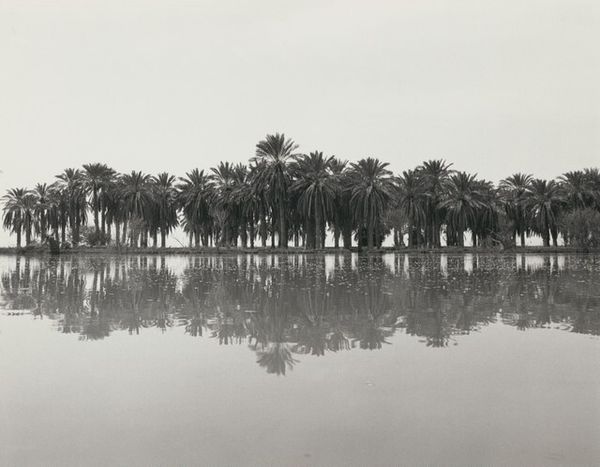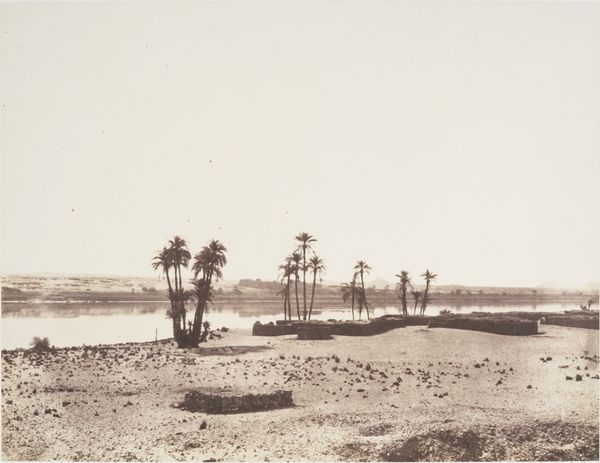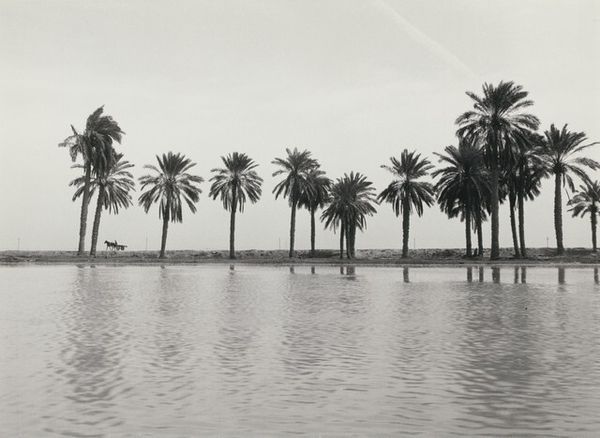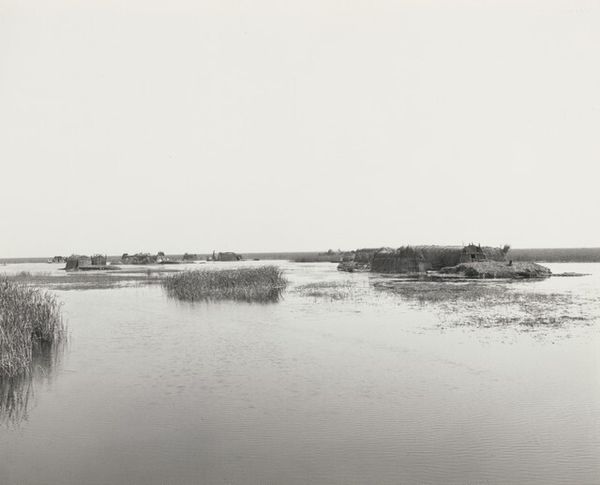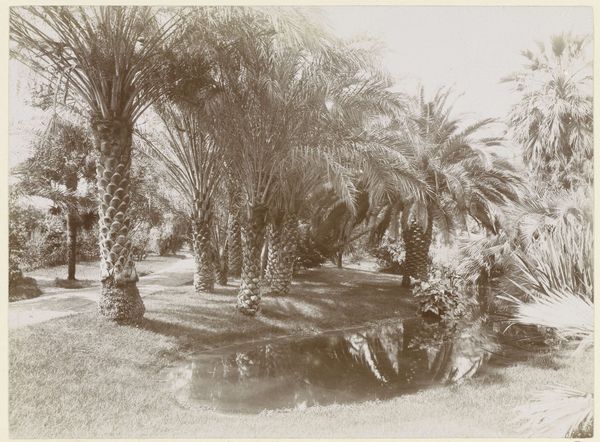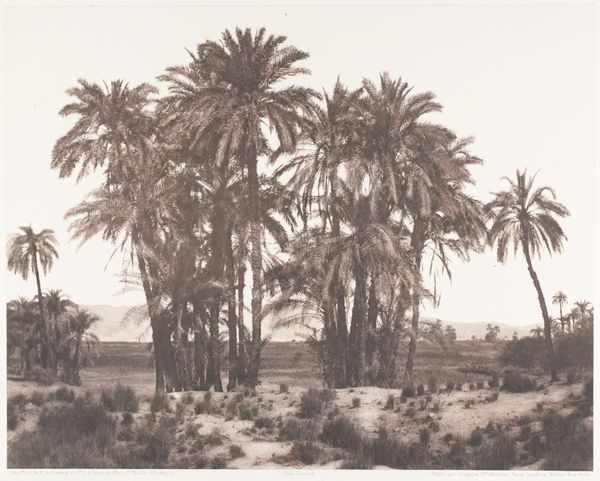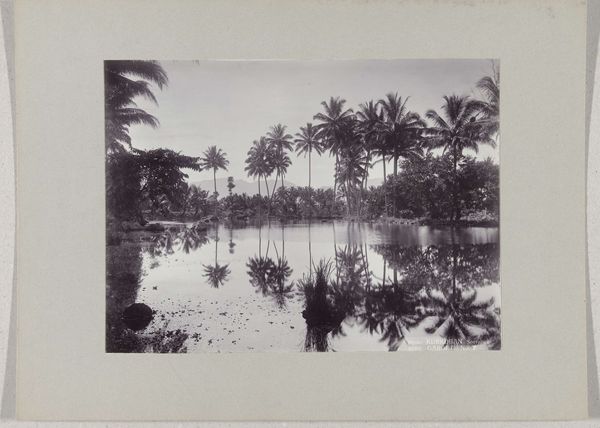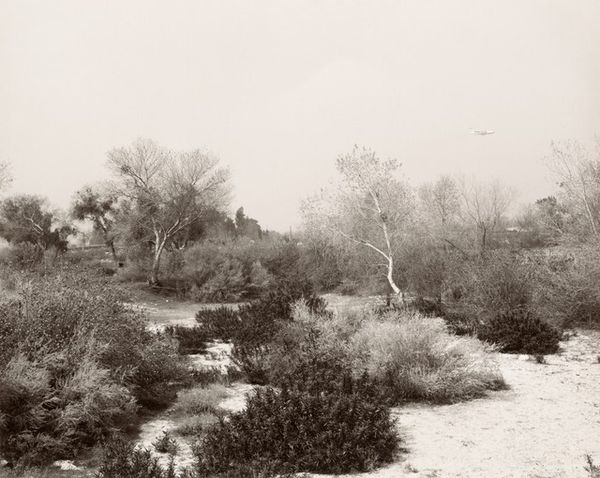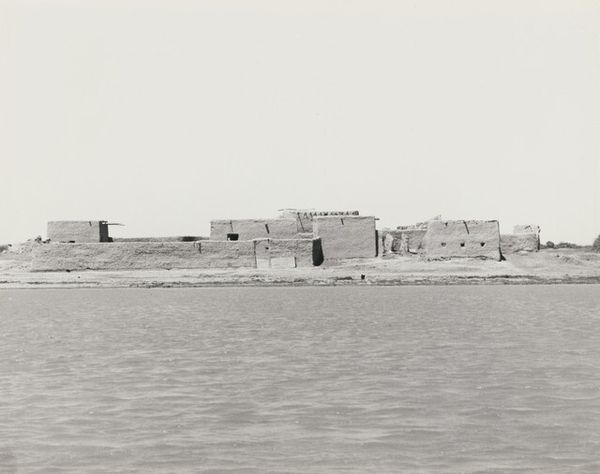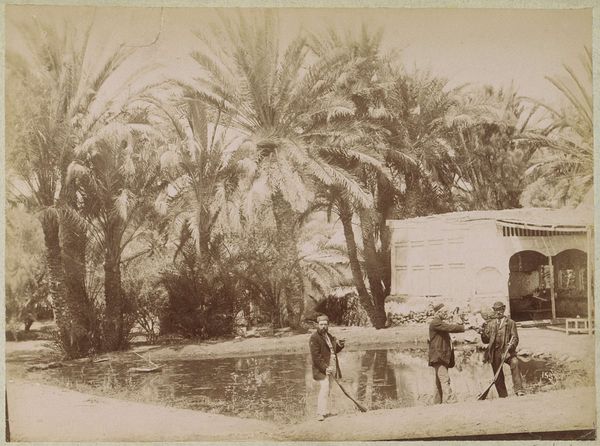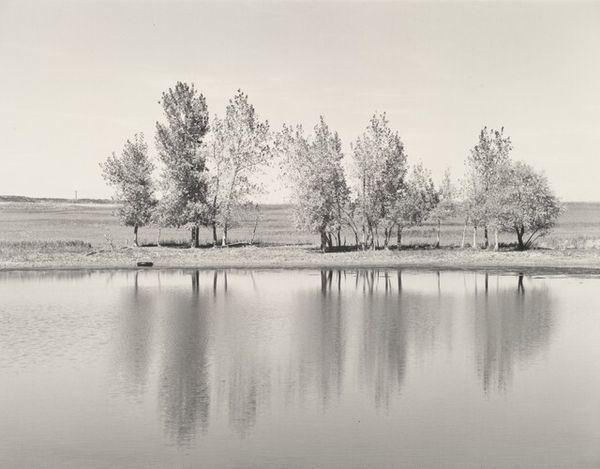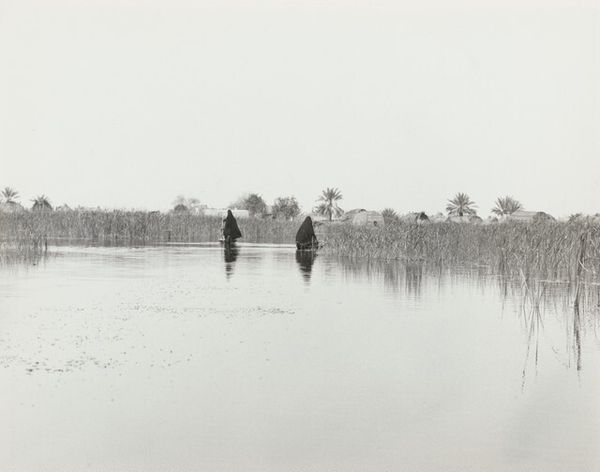
#
excavation photography
#
scenic
#
black and white photography
#
countryside
#
outdoor scenery
#
landscape photography
#
monochrome photography
#
outdoor activity
#
scenic spot
#
shadow overcast
Dimensions: image/sheet: 24 × 30.3 cm (9 7/16 × 11 15/16 in.)
Copyright: National Gallery of Art: CC0 1.0
Editor: This intriguing black and white photograph, "Untitled," was taken by Ursula Schulz-Dornburg in 1980. It shows what looks like an oasis scene, perhaps? There’s a building, a low wall, palm trees, all reflected in still water. It feels strangely desolate to me. What do you see in this piece, considering its history and context? Curator: It’s tempting to see a romantic "oasis," but Schulz-Dornburg's work often explores sites of transition, peripheries, and, at times, the impact of political or social forces on landscapes. Consider, for instance, that many of her projects focus on the Russian steppe, or border zones. Does knowing this change how you view the image? Editor: Yes, it does. The stillness I noticed could also be interpreted as abandonment or a kind of forgotten place. It raises questions about who might have lived there, and why it looks this way. Is it possible that what seems ‘natural’ is in fact a construction of human influence and perhaps even geopolitical factors? Curator: Precisely! The beauty of landscape photography, particularly in a black and white format such as this, is its ability to invite our projection. The artist frames something and encourages a particular kind of seeing. Consider the political implications of landscape photography, especially during periods of conflict, expansion or imposed cultural values. This photograph, in its quiet way, provokes these thoughts. Editor: So, while I initially responded to its aesthetic qualities, understanding Schulz-Dornburg's broader practice and historical context reveals a potentially deeper commentary about place, power, and perhaps even the fragility of settlements. Curator: Exactly. It invites a critical awareness of how places are shaped and represented, moving us beyond simple aesthetic appreciation. That awareness also emphasizes the role of imagery itself within socio-political contexts. Editor: I never considered how a landscape photo could carry such heavy socio-political meaning, thanks! Curator: And thank you for bringing your perceptive reading to the photograph. It shows that art can reveal powerful, often hidden stories.
Comments
No comments
Be the first to comment and join the conversation on the ultimate creative platform.

